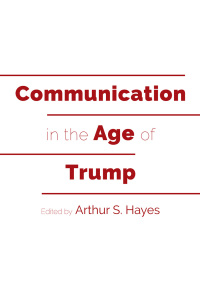Answered step by step
Verified Expert Solution
Question
1 Approved Answer
The instructor of an elementary - school class tries to teach her students some simple principles of economics by having them play a trading game.
The instructor of an elementaryschool class tries to teach her students some simple principles
of economics by having them play a trading game. She starts out by giving each student small
quantities of up to five different goods:
M&Ms in small FunSize packages containing M&Ms each: abbreviation MM
pencil erasers the handheld, rectangular kind: abbreviation PE
simple mechanical calculators: abbreviation C
fidget spinners: abbreviation FS
small bottles of juice: abbreviation JB
After she hands out the goods, on a Monday, she lets the students trade them freely for
minutes each school day, through Friday of the following week. The students quickly open
up some of the M&M packages so they can eat or trade individual M&Ms She provides
them with small foodstorage bags they can use to store loose M&MsThese bags are
not a trade item. Each day, she hands out a few additional M&M packages and juice
bottles, to replace ones that have been consumed.
After a week or so of trading, stable market trade rates for the goods, when traded one for
another, have emerged. These include among others:
three juice bottles trade for one fidget spinner,
one package of M&Ms plus loose M&Ms trade for two juice bottles,
fifteen pencil erasers trade for two calculators,
two calculators trade for three fidget spinners.
A Calculate the total number of distinct relative prices in this classroom economy. Note
that, at this stage, Im looking for the number of distinct prices, not which prices they
are, or their numerical values.
Hint: Use a formula presented on page of the latest revised version of my AB
lecture notes. Remember that there are five different goods.
B In this question, well use a systematic procedure to identify the distinct pairs of goods
that can be traded for each other. Well report distinct pairs like this: FS and JB JB
and MM FS and MM etc.
For distinct pairs, the order of the goods listed doesnt matter. For example, if we think
of juice and fidget spinners JB and FS as a pair of goods, then fidget spinners and
juice are not another distinct pair. But juice and M&Ms JB and MM are another
distinct pair, and fidget spinners and M&Ms FS and MM are a third distinct pair.
Well use alphabetical order to determine the order in which we report the pairs, based on
the first letter of the abbreviation for the first good in a pair. If two pairs have the same
first good, well order them using the first letter in the abbreviation for the second good.
Note that I followed both rules in ordering the three example pairs: JB and FS precedes
JB and MM because F precedes M in alphabetical order; both of these pairs precede FS
and MM because J precedes F in alphabetical order.
a How many distinct pairs include calculators C
b Report these pairs.
a How many additional distinct pairs include fidget spinners FS Note that you
should already have one pair that includes them.
b Report these additional pairs.
a How many additional distinct pairs include juice bottles JB Note that you
should already have two pairs that include them.
b Report these additional pairs.
a How many additional distinct pairs include M&Ms MM Note that you
should already have three pairs that include them.
b Report these additional pairs.
Are there any additional distinct pairs that include pencil erasers PE
Explain briefly.
Note that if youve answered these five questions correctly, the total number of distinct
pairs youve identified should be equal to your answer to Question A
In this question, youll use the price information youre given in the last four lines of the
introduction to this assignment to calculate the values of all the distinct relative prices in
this classroom economy. Note that there should be exactly as many relative prices as your
answer to Question A
The relative prices were interested in are unit prices: the price of one unit of a good, in
units of another good. For example, were given the unit price of fidget spinners in juice
bottles. But were not given the unit price of calculators in pencil erasers, although its
very easy to calculate from the information given.
In the classroom economy, the students think of a single M&M not a package, as one unit of
M&Ms For example, the students think of two juice bottles as costing M&Ms why
Note that each distinct pair of goods produces only one distinct relative price. Consider,
for example, calculators and pencil erasers. If we count the price of calculators in pencil
erasers as one relative price then we dont count the price of pencil erasers in calculators
as a second distinct relative price, because the two prices have a fixed relationship to each
other: see below.
For each distinct pair of goods, well start by calculating the version of their relative price
that produces the highest unit price. In the case of calculators and pencil erasers, for
exam
Step by Step Solution
There are 3 Steps involved in it
Step: 1

Get Instant Access to Expert-Tailored Solutions
See step-by-step solutions with expert insights and AI powered tools for academic success
Step: 2

Step: 3

Ace Your Homework with AI
Get the answers you need in no time with our AI-driven, step-by-step assistance
Get Started


